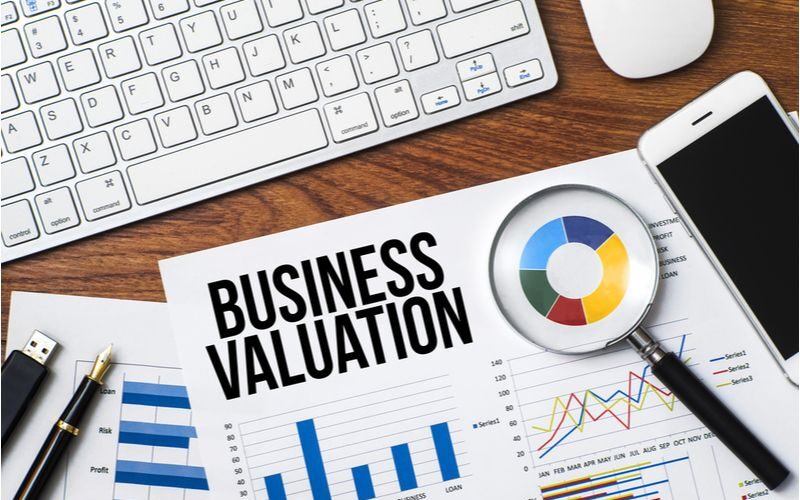1. Identifying and understanding the purpose of valuation:-
The process of valuation of a business in other words is simply a story of the business itself written in the words of the person performing the valuation.
The purpose behind the entire story(valuation process) of the business influences a lot of measures that are used to value a company such as the valuation approach and the assumptions made during the process which directly impacts the concluded value of the company.
Some purposes of business valuation are:-
• Mergers Acquisitions
• Restructuring or liquidation of a company
• Initial public offering
During an initial public offering the going concern of a business is assumed when valuation is done whereas during Mergers Acquisitions the purchaser may realize benefits that make the acquired business more valuable than the fair market value. This might make the basic value substantially higher than for a going concern or orderly/forced liquidation premise.
2. Conducting industry research:-
Understanding the industry/sector of the business is a very significant part of the valuation process. Industry research provides macro economic and industry factors that could potentially affect the business performance in the future which eventually helps in making more accurate assumptions to forecast the business performance. The past trends in the industry also helps to make more accurate projections which is the Forecasting step.
This step also includes the government policies and global economical factors that could affect the future outlook of the industry.
3. Gathering relevant data:- Financial statements, operational performance, client base, supplier agreements
And all the other data that will impact the future performance, profitability and scaling of the business should be extracted and analyzed in detailed. The best source to get all this data is through the annual business report, investor calls and transcripts and investor presentations. Other websites such as Screener, Yahoo finance could help in extracting such data.
4. Analyzing the historical performance of the business:-
It is very crucial to understand the companies past trends and performance to paint the true picture of the business. Understanding the historical performance, ownership structure and management helps to know the base or the fundamentals of the business on which assumptions could be laid upon.
Analyzing the financial statements of the business:-
• The income statement which helps to analyze the past operational performance and efficiency of the business.
• The Balance sheet which gives the financial position of the business, the assets, investments, loans and other borrowings, all this data is provided by the Balance sheet.
• The Cash flow statement provides the true picture of the business efficiency and cash conversion, all the forecasting valuation is done using the cash flows of the business.
All this analysis helps to establish the relative performance of the subject business when compared to its peers.
5. Establishing assumptions:- One of the most important steps in valuation is to establish assumptions.
Assumptions are made taking into account a huge number of factors which could be macro economic factors affecting the industry or company specific factors such as management efficiency.
Every individual can have different assumptions about the business depending on that person’s point of view, understanding and research hence no assumption is ever accurate and the more factors incorporated in establishing the assumptions the more close they get to being accurate but never fully accurate.
6. Determining the future outlook of the business(Forecasting):- Value, in the eyes of a purchaser or investor, derives from the prospect of future cash flows. Cash flows derive the actual value of the business. The future value of the business is derived through forecasting.
Forecasting of the business performance is done on the basis of the assumptions established in the previous step, the detailed analysis of the past performance and industry research and the management efficiency thus all the steps above assist in the process of forecasting hence with the help of these the companies future revenues, expenses, capital requirements, cash flows etc are being projected.
Comparison of these metrics to other similar companies can also add insight into the Subject Company’s future prospects.
7. Determine the valuation approach to be used:-
Valuation methods:-
• Market capitalization
• Times revenue method
• Earnings multiplier
• Discounted cash flow
• Book value
• Liquidation value
Selecting the most appropriate approach to value a business depends on the purpose and the basis of valuation and in come cases the availability of data. The three basic approaches of valuation are market, income and cost approach.
Each approach has its advantages and disadvantages hence the most appropriate approach is chosen taking into consideration the purpose.
8. Arriving at a concluded value:- The final step is reaching to a conclusion of value. A comprehensive and detailed valuation report is made to support the final concluded value of the business which details the information and valuation approach or approaches and the assumptions made in projections. This report establishes the defensibility and integrity of the conclusion of value by showing how it was derived.
– Rhythm Babbar
Finance Team
AnBac Advisors

